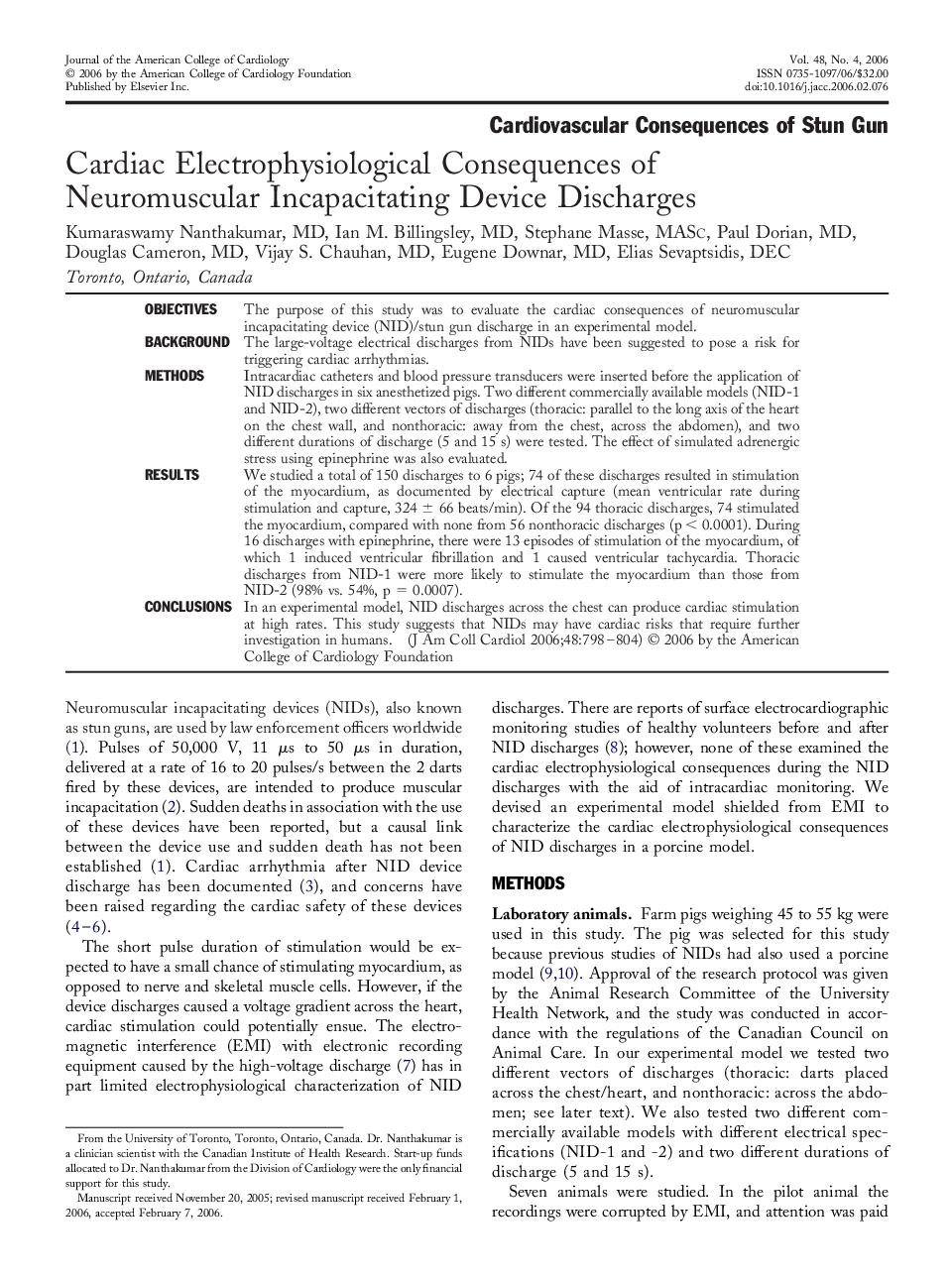| Article ID | Journal | Published Year | Pages | File Type |
|---|---|---|---|---|
| 2955378 | Journal of the American College of Cardiology | 2006 | 7 Pages |
ObjectivesThe purpose of this study was to evaluate the cardiac consequences of neuromuscular incapacitating device (NID)/stun gun discharge in an experimental model.BackgroundThe large-voltage electrical discharges from NIDs have been suggested to pose a risk for triggering cardiac arrhythmias.MethodsIntracardiac catheters and blood pressure transducers were inserted before the application of NID discharges in six anesthetized pigs. Two different commercially available models (NID-1 and NID-2), two different vectors of discharges (thoracic: parallel to the long axis of the heart on the chest wall, and nonthoracic: away from the chest, across the abdomen), and two different durations of discharge (5 and 15 s) were tested. The effect of simulated adrenergic stress using epinephrine was also evaluated.ResultsWe studied a total of 150 discharges to 6 pigs; 74 of these discharges resulted in stimulation of the myocardium, as documented by electrical capture (mean ventricular rate during stimulation and capture, 324 ± 66 beats/min). Of the 94 thoracic discharges, 74 stimulated the myocardium, compared with none from 56 nonthoracic discharges (p < 0.0001). During 16 discharges with epinephrine, there were 13 episodes of stimulation of the myocardium, of which 1 induced ventricular fibrillation and 1 caused ventricular tachycardia. Thoracic discharges from NID-1 were more likely to stimulate the myocardium than those from NID-2 (98% vs. 54%, p = 0.0007).ConclusionsIn an experimental model, NID discharges across the chest can produce cardiac stimulation at high rates. This study suggests that NIDs may have cardiac risks that require further investigation in humans.
